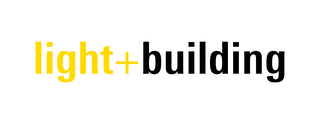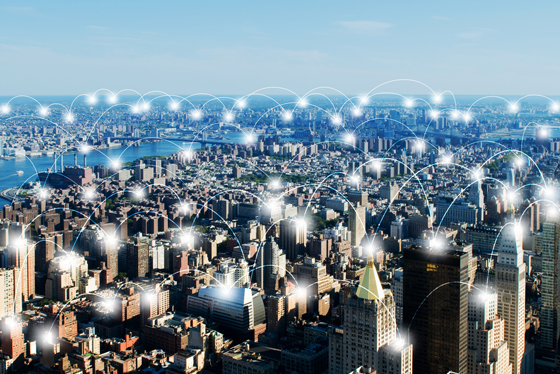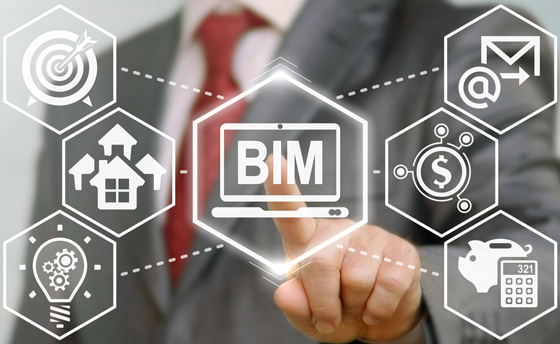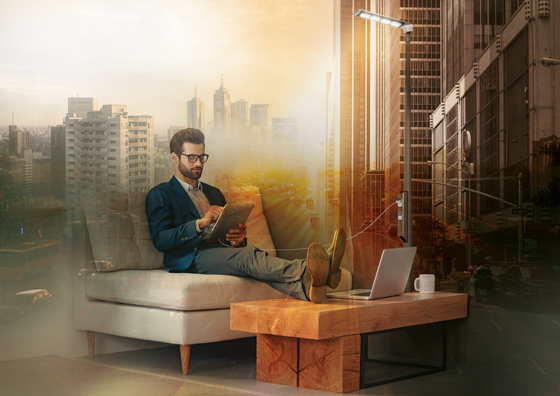Get smart: Light + Building 2018
Text by Light + Building
Frankfurt am Main, Germany
15.02.18
Life and work in urban centres will face growing challenges in the future. Digitally networked building technology offers solutions while raising the bar for comfortability.
Current and future challenges posed by the growing demand for energy and climate-protection objectives can only be met with intelligent solutions for the infrastructure and buildings. In this connection, the focus is on the reduction of CO2 emissions and greater efficiency. Especially in the case of buildings, increasing digitalisation offers an outstanding basis for achieving these objectives whereby the planning, construction and use of smart buildings will change fundamentally.
Forward-looking planning is essential to ensure that the technology of a smart building will function in the future, too, i.e., that modern, rapidly and constantly changing building-services technology can be integrated at any time during the building’s lifetime. This is not possible with traditional planning and construction processes. Building Information Modelling (BIM) methods, which bring together architecture and engineering, house and building-services technology and facility management in computer models, are the key to future-oriented planning. The whole building with all disciplines is planned concurrently and simulated, tested and, if necessary, corrected in digital models. There is no need for complex changes on the building site. Everyone involved in the planning and construction must cooperate closely when using BIM methods. Moreover, it is essential that everyone involved in the construction process uses 3D CAD tools employing BIM-conform data models. This information is then entered into a central database, which makes it possible to minimise expensive construction errors at an early stage.
In addition to BIM, there is another subject that concerns not only the sector but society as a whole: the trend to living in cities, which is forcing municipalities to achieve big energy savings without cutting services, despite ever-tighter budgets. The smart city – the networked and intelligent city – is the solution for urbanisation problems. Through the use of digital technologies, cities will become smarter, more efficient and more sustainable. The infrastructure, buildings and services must be modernised using solutions for the internet of things (IoT), which provides a constant, rapidly changing flow of data from sensors and devices. These data flows and their interoperability form the basis for cost reductions. A city has numerous data sources, e.g., companies, schools, museums, city councils, media and associations. The secret is being able to generate useful knowledge from this data.
The IoT is penetrating all sectors and can be subdivided into many different fields. One of them is the interlinkage of devices and systems in buildings, which makes it possible to plan more efficient measures and controls for owners, operators and residents. Thus, smart homes (digitalisation and networking in private dwellings) and smart buildings (automation and the central operation of technical facilities from dedicated buildings) are important parts of the internet of things. Common to both is that intelligent building-services technology solutions are increasingly software dependent. Accordingly, the man-machine interfaces for commercial solutions and private applications are becoming increasingly similar.
Smart living – the digitalisation and interlinkage of different aspects of life – is another cog in the system of tomorrow’s intelligent city. It was only last March that, together with numerous companies and trade associations, the German Electrical and Electronic Manufacturers’ Association (Zentralverband Elektrotechnik- und Elektronikindustrie e.V. – ZVEI) and the Federal Ministry of Economics and Energy (Bundesministerium für Wirtschaft und Energie – BMWi) founded the ‘Smart Living Initiative’, the aim of which is to make Germany a leading market for smart-living technologies. Visitors to Light + Building 2018 will also find a variety of smart-living solutions at the exhibition stands. In addition to the exhibitors’ presentation, the 2018 E-House (a realistic house with 100 m2 of space organised by the Central Association of the German Electrical and Information Technology Trades (Zentralverband der Deutschen Elektro- und Informationstechnischen Handwerke – ZVEH) will also reflect this theme. Smart living is not only of interest to the younger generation. In view of the process of demographic change and the growing number of single households, this aspect is also of growing significance for older people who, thanks to intelligent technology, have the chance to remain independent longer.
Whether smart homes, smart buildings, smart living or smart cities, smartification is a never-ending process that changes all aspects of life. ‘Smart solutions’ ensure that buildings become an integral part of the internet of things. Light + Building 2018 will be dominated by ‘smart solutions’ with the world’s leading suppliers of lighting, electrical technology and house and building automation showing market-ready, intelligent solutions for a smarter world in Frankfurt am Main from 18 to 23 March 2018.






